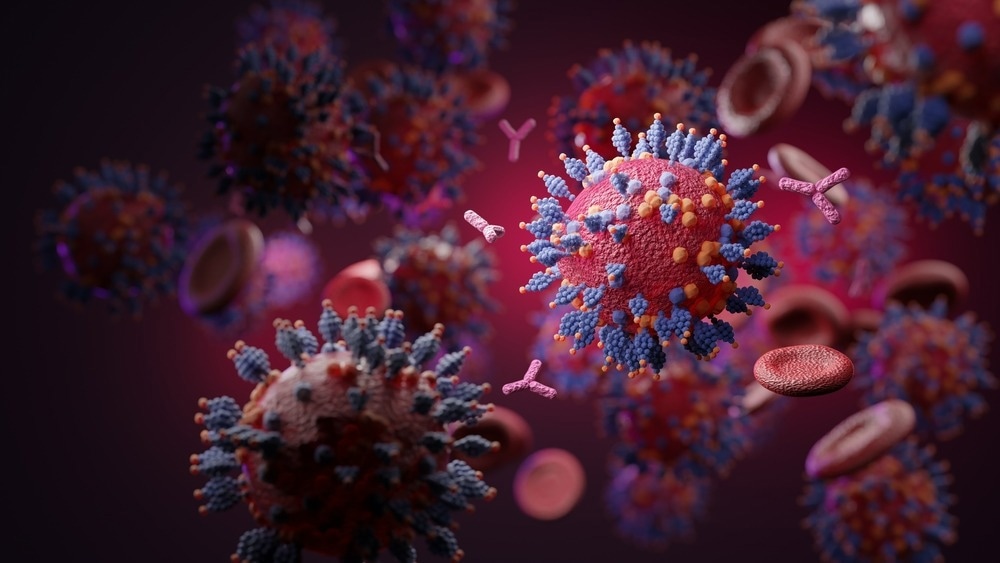In a recent study posted to the bioRxiv* preprint server, researchers compared the severity levels of disease caused by different severe acute respiratory syndrome coronavirus 2 (SARS-CoV-2) variants of concern (VOCs) in the rhesus macaque model.
 Study: SARS-CoV-2 Omicron BA.1 and BA.2 are attenuated in rhesus macaques as compared to Delta. Image Credit: Fit Ztudio/Shutterstock
Study: SARS-CoV-2 Omicron BA.1 and BA.2 are attenuated in rhesus macaques as compared to Delta. Image Credit: Fit Ztudio/Shutterstock

 This news article was a review of a preliminary scientific report that had not undergone peer-review at the time of publication. Since its initial publication, the scientific report has now been peer reviewed and accepted for publication in a Scientific Journal. Links to the preliminary and peer-reviewed reports are available in the Sources section at the bottom of this article. View Sources
This news article was a review of a preliminary scientific report that had not undergone peer-review at the time of publication. Since its initial publication, the scientific report has now been peer reviewed and accepted for publication in a Scientific Journal. Links to the preliminary and peer-reviewed reports are available in the Sources section at the bottom of this article. View Sources
Background
The whole-genome sequencing (WGS) of SARS-CoV-2 genomes led to early detection of its VOCs, which are those variants that display increased transmissibility and disease severity. So far, WGS has helped researchers identify five SARS-CoV-2 VOCs, including Alpha (B.1.1.7), Beta (B.1.351), Gamma (P.1), Delta (B.1.617.2), and Omicron (B.1.1.529). Animal models allow comparing their infection dynamics circumventing population-wide confounding factors, such as previous SARS-CoV-2 infections and vaccine coverage, which makes it challenging to identify the evolutionary significance of each VOC in the human population.
About the study
In the present study, researchers utilized the rhesus macaque model to examine differences in pathogenicity between SARS-CoV-2 Delta, Omicron BA.1, and Omicron BA.2 VOCs. They used baby hamster kidney cells (BHKs) expressing the human or rhesus angiotensin-converting enzyme 2 (ACE2). Likewise, they used pseudotyped vesicular stomatitis virus (VSV) expressing the S protein of the Delta, Omicron BA.1, and Omicron BA.2 VOCs to examine the entry profile of the respective VOCs.
The team made three groups of six rhesus macaques, which were intranasally and intratracheally inoculated with 2 × 106 median tissue culture infective dose (TCID50) of Delta, or Omicron BA.1 and BA.2 VOCs. The researchers collected nasal swabs from infected animals at zero-, two-, four-, and six-days post inoculation (dpi). They detected the presence of viral genomic ribonucleic acid (gRNA) and subgenomic RNA (sgRNA) in the bronchial cytology brush (BCB and bronchoalveolar lavage (BAL) samples of the test animals. Further, the team developed an area under the curve for each animal - a measure of the total amount of viral gRNA and sgRNA shed between two- and six dpi.
They euthanized the test animals at six dpi to collect tissues from the upper and lower respiratory tract and intestinal tract. The team analyzed radiographs of all animals for the presence of pulmonary infiltrates. Lastly, the researchers analyzed nasosorption, serum, and BAL samples for the presence of nine different cytokines.
Study results
Most test animals across all three study groups had days of reduced appetite throughout the study. However, the researchers observed respiratory signs in four Delta-infected animals, one Omicron BA.2 infected animal, and none with Omicron BA.1 infection. Compared to Delta, Omicron showed reduced entry into the BHK cell line. Moreover, in nasal swabs, Omicron sub-variants resembled D614G, Alpha, and Beta, whereas the viral load in animals inoculated with the Delta VOC was higher. In BCB samples and the lung tissues, viral load was highest for the Delta VOC only. The presence of viral RNA was also limited in oropharyngeal and rectal swabs compared to nasal swabs and the blood samples too had no viral RNA on any exam day.
Similar to nasal swab samples, BAL and BCB samples had the highest viral load on two dpi, which declined between four and six dpi. While the authors detected less viral RNA in BCB samples of animals inoculated with Omicron BA.1 or BA.2 compared to Delta, there were no significant differences between groups in the amount of viral RNA detected in BAL samples.
Although the systemic response was comparable, cytokines and chemokines were upregulated to higher levels in Delta-inoculated animals than in Omicron BA.1 or BA.2-inoculated animals in the upper respiratory tract. The nasosorption samples obtained from animals challenged with Delta had elevated IL-1 receptor antagonist (IL1- RA), interleukin-6 (IL-6), IL-15, and tumor necrosis factor-α (TNF-α) on all days, with only a few changes in cytokine and chemokine levels in BAL samples. Conversely, serum samples showed similar responses across all groups up to two dpi, with slight divergences by six dpi.
The viral RNA was mostly limited to the respiratory tract in Omicron-inoculated animals, whereas viral RNA in Delta-inoculated animals was found even in extra-respiratory tissues.
Conclusion
Overall, the study data suggested that Omicron replicated less than the Delta VOC in rhesus macaques, resulting in reduced clinical disease, further supporting the notion that Omicron infection results in less severe disease even in the absence of pre-existing immunity. Further, the study data showing a reduction in viral load, disease, and pathology following Omicron BA.1 and BA.2 infection reflects observations in the human population.

 This news article was a review of a preliminary scientific report that had not undergone peer-review at the time of publication. Since its initial publication, the scientific report has now been peer reviewed and accepted for publication in a Scientific Journal. Links to the preliminary and peer-reviewed reports are available in the Sources section at the bottom of this article. View Sources
This news article was a review of a preliminary scientific report that had not undergone peer-review at the time of publication. Since its initial publication, the scientific report has now been peer reviewed and accepted for publication in a Scientific Journal. Links to the preliminary and peer-reviewed reports are available in the Sources section at the bottom of this article. View Sources